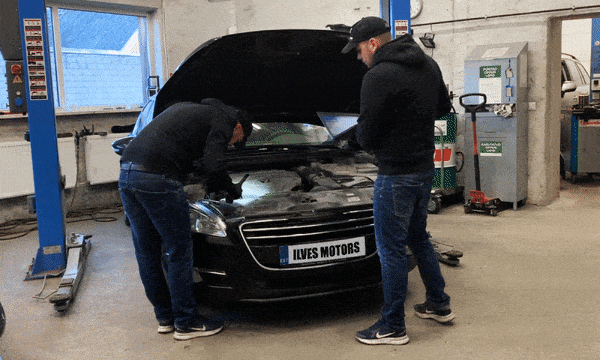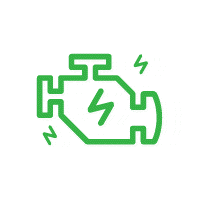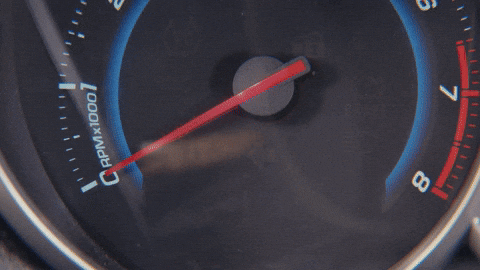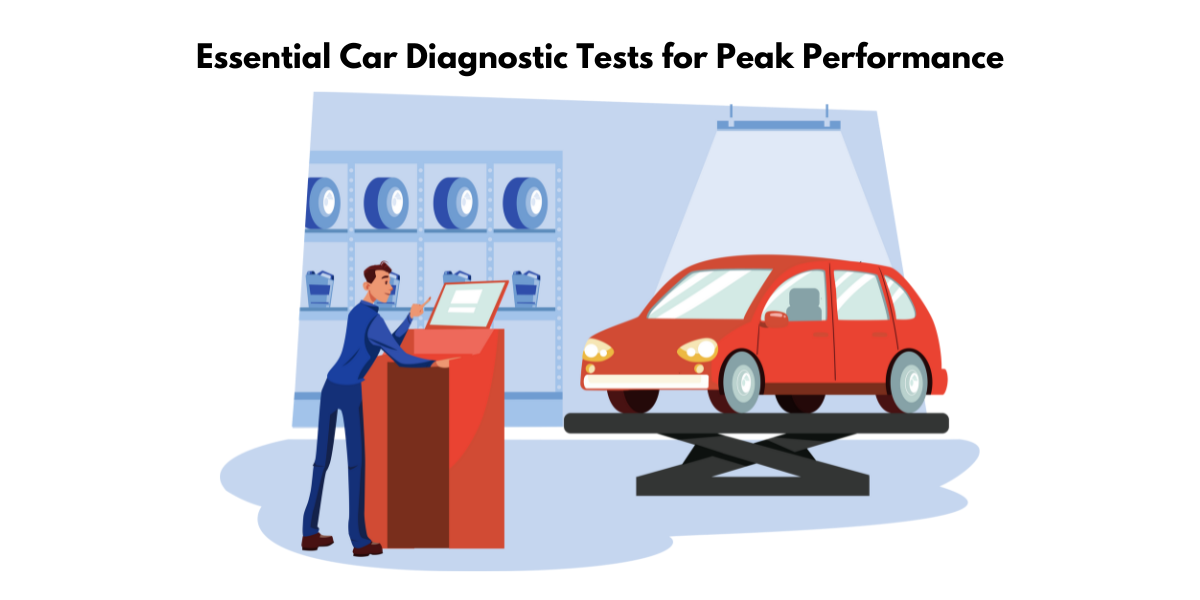Diagnose Your Car: Top Car Diagnostics Tests for Optimal Performance
LISTEN TO AUDIO
Understanding Vehicle Diagnostics
The Importance of Car Diagnostics
Car diagnostics are like a check-up for your vehicle, identifying potential problems before they turn into major headaches. Think of them as a window into your car’s health, providing crucial information that can help you keep your vehicle running smoothly and safely.
A well-executed diagnostic test can spot little issues that could escalate into bigger, more expensive ones. They ensure optimal performance, help maintain fuel efficiency, and reassure you that your car won’t give up on you unexpectedly. Safety is another significant aspect, as diagnostics can unearth problems that might compromise your vehicle’s safe operation.
What to Expect from This Guide
You’re about to embark on a journey to better understand your car’s inner workings! This guide will navigate you through the essentials of vehicle diagnostics, from the basics to the nitty-gritty of various tests and when they’re needed.
Expect clear explanations of complex concepts, broken down to make them easy to grasp. You’ll learn about the common symptoms that signal the need for a diagnostic test, what happens during these tests, and the powerful benefits of keeping up with routine diagnostics for your vehicle’s health and longevity.
Think of this as your roadmap to proactive car care, equipping you with knowledge that can save you time and money in the long run. Also, anticipate practical insights, such as cost-related considerations and the value of investing in personal diagnostic tools.

The Basics of Car Diagnostic Tests
Defining Car Diagnostic Testing
Car diagnostic testing is akin to a medical examination but for your vehicle. It involves using advanced software and tools to interact with your car’s computer system, uncovering the state of your engine, transmission, exhaust, brakes, and other critical components.
During a diagnostic test, a technician connects a scanner to your car’s onboard diagnostics port. This tool then retrieves data from the vehicle’s computer system, including error codes and status messages about various subsystems. With the information at hand, the mechanic can determine where issues may lie and provide an accurate diagnosis, saving you time and guesswork.
These tests highlight anything abnormal or due for service, guiding the maintenance or repair process to ensure your car runs as designed. Remember, while mysterious car troubles can cause dread, diagnostic testing shines a spotlight on the unknown, clarifying what your next steps should be.
How Modern Vehicles Use Onboard Computers for Diagnostics
Modern vehicles are rolling marvels of technology, with onboard computers integral to their operation. These computers, often referred to as electronic control units (ECUs), manage and monitor a symphony of functions from engine timing to emissions control.
When you turn the key or press the start button, these computers spring into action, conducting self-checks on various systems. They keep tabs on your vehicle’s performance and, more importantly, they’re central to diagnostic tests. If a system deviates from predefined parameters, the computer logs a fault code, which diagnostic tools can later read.
These diagnostics are possible because of the standardized Onboard Diagnostics (OBD) system, particularly the current OBD-II standard. This technology provides universal error codes and data readings, allowing consistent diagnostics across many different vehicle makes and models. And with the rise of connected car technology, including telematics and over-the-air updates, these systems are becoming more sophisticated, sometimes even able to preemptively alert you and schedule service before a part fails.

Common Types of Diagnostic Tests
OBD-II Scans: The Standard in Vehicle Diagnostics
OBD-II scans are the gold standard when it comes to vehicle diagnostics. Since the mid-1990s, OBD-II has been mandatory in cars sold in the United States. It’s a high-level system that does more than just tell you if there’s an issue; it provides specific data and codes that pinpoint where that issue is.
The moment your car’s check engine light illuminates, an OBD-II scanner becomes your best friend. A technician connects the scanner to your vehicle’s OBD port, usually found under the dashboard, and it reads diagnostic trouble codes (DTCs) stored in the car’s computer. These codes can signal anything from a misfiring engine to a loose gas cap.
Each code starts with a letter followed by four numbers, for instance, P0301 indicates a misfire in cylinder one. These standardized codes allow technicians anywhere to understand the problem, making diagnostics quicker and cross-brand service more efficient. It’s a universal language for mechanics, ensuring they can speak directly to your car’s needs without getting lost in translation.
Specialized Diagnostic Tools and Techniques
For a deeper dive into your car’s health, mechanics use specialized diagnostic tools and techniques that go beyond standard OBD-II scans. These advanced devices access a car’s proprietary systems to provide comprehensive data and diagnostics that are often model-specific.
Technicians may use manufacturer-specific scan tools, which allow for a more nuanced examination of vehicle systems. These can include diagnostic software connected to a laptop or tablet that interfaces with the car’s electronics, offering insights into the performance and condition of virtually all onboard systems.
Digital multimeters and oscilloscopes also come into play when diagnosing electrical issues. While a multimeter measures voltage, current, and resistance for basic troubleshooting, an oscilloscope offers a visual representation of electrical signals, analyzing the waveforms produced by sensors and circuits. This is especially pertinent for diagnosing intermittent problems or faults within the vehicle’s wiring or sensors.
These specialized tools allow for a surgical approach to car diagnostics, providing detailed information that can significantly reduce guesswork and streamline repairs. Skilled technicians can interpret the data to diagnose complex issues that a simple OBD-II scan might not reveal, ensuring a more thorough and accurate fix.

Signs Your Car Needs a Diagnostic Test
Check Engine Light: A Call to Action
When your car’s check engine light flashes on, it’s like a siren calling for your attention. It signifies that your vehicle’s computer has detected a fault that could impact the engine’s performance or emissions. This light shouldn’t be ignored; prompt action can prevent further damage and potentially hefty repair bills.
A constantly illuminated check engine light might hint at a minor issue, while a flashing light typically indicates a more severe problem that needs immediate attention. Taking your car for a diagnostic check as soon as this light comes on helps diagnose the error, saving you from the anxiety of guessing what the problem might be.
Remember, the check engine light is a general warning and could represent anything from a loose fuel cap to a serious engine malfunction. That’s why it is critical to have a reputable service center or a skilled technician perform a diagnostic to translate what your car is trying to tell you. They’ll uncover the root of the problem, ensuring you only fix what’s necessary.
Performance Issues that Suggest Diagnostic Needs
Sometimes your car speaks to you, not through warning lights but through changes in performance. If you notice a rough idle, unexplained stalling, or your car hesitates when accelerating, these are potential red flags that warrant a diagnostic test.
Such symptoms might indicate issues with the engine, fuel system, or ignition—a diagnostic test can help narrow down and confirm the cause. It’s always better to listen to these early signs and act promptly. Diagnosing problems early on can prevent you from being stranded and avoid the domino effect where one issue leads to another, escalating repair costs.
Keep in mind, these performance issues can be subtle at first, so pay attention to any unusual changes in your car’s behavior. Doing so allows you to be proactive, ensuring the smooth operation of your vehicle and maintaining its longevity. A timely car diagnostic test is a strategic move to keep those gears turning without a hitch.
Benefits of Regular Diagnostic Checks
Preventive Maintenance and Early Problem Detection
Preventive maintenance is like nurturing a healthy lifestyle for your car; it’s about taking care of potential issues before they evolve into serious problems. Car diagnostics play a pivotal role in this approach by detecting early signs of wear and tear or malfunctions.
By catching issues early through diagnostic tests, you save money and time while avoiding the stress of unexpected breakdowns. For example, identifying a weak battery through diagnostics can prevent you from getting stranded, while spotting a worn belt can save your engine from severe damage.
Regular diagnostic checks are an investment in your car’s health, ensuring systems function correctly and are serviced in time. They extend the lifespan of your vehicle and help maintain its value, making it a smart choice for any car owner keen on reliability and safety on the road.
Enhanced Vehicle Performance and Longevity
Regular diagnostic checks are the secret to squeezing every bit of performance and longevity out of your car. Think of them as tune-ups for the digital age, ensuring everything under the hood—and in the car’s electronics—is working harmoniously.
With diagnostics, issues can be identified and rectified before they degrade your car’s performance. This could mean smoother acceleration, better fuel efficiency, and more responsive handling. Furthermore, diagnostics can keep emissions in check, contributing to a healthier environment.
Longevity is another major perk. By addressing minor issues promptly, you’re preventing the kind of damage that can shorten your car’s life. Regular diagnostics translate into a well-maintained vehicle that not only runs better but also retains a higher resale value should you decide it’s time for a new ride. Your car is an investment, and with the help of diagnostic tests, it’s one that will continue to pay off down the road.

When to Get a Diagnostic Check
Routine Checks vs. Problem-Based Diagnostics
Routine checks and problem-based diagnostics are two sides of the same coin, both crucial for the health of your vehicle. Routine checks, performed as part of your regular service schedule, ensure that everything is functioning correctly and help catch potential problems before they manifest in your car’s performance.
On the other hand, problem-based diagnostics are performed when there’s a clear sign of trouble, like an illuminated check engine light or odd noises coming from the engine. These are the S.O.S. calls from your car, indicating that something is amiss and needs immediate attention.
Balancing these approaches is key. While problem-based diagnostics are imperative when issues arise, routine checks can often prevent these problems from occurring in the first place. By staying diligent with both, you ensure the smooth running and reliability of your car, avoiding the inconvenience and expense of unexpected repairs.
Recommended Frequency for Diagnostic Tests
You might wonder how often your car needs a check-up. It’s best to refer to your vehicle owner’s manual for tailored advice, but generally, incorporating diagnostic tests into your routine service is a smart move.
Jiffy Lube, a seasoned player in vehicle maintenance, suggests that beyond following your manual’s recommendations, you should seek diagnostic tests when dashboard warning lights activate or if you notice any changes in vehicle performance. Also, if you’ve bought a used car, it’s wise to run diagnostic tests to ensure you’re starting with a clean slate.
Remember that proactive maintenance is your best defense against vehicle wear and tear. Regular diagnostic assessments can help keep your car in top condition, identifying potential issues before they require costly repairs or leave you stranded on the roadside. It’s a small investment in time and money that could save you plenty down the path.
Cost Factors for Diagnostic Services
What Influences the Price of a Car Diagnostic Test?
Ever wonder why the cost of car diagnostic tests varies? Several factors come into play. If you’re in a bustling city, the diagnostic fees might be higher due to the higher cost of living and the overhead costs for the shops, while rural or less dense areas may offer more wallet-friendly rates.
The experience of the mechanic is another cost-driving factor. You might pay more for a seasoned professional who can pinpoint issues quickly and accurately, as opposed to less experienced mechanics who might charge less but take more time.
Your car’s make and model can also impact the price. Luxury and imported vehicles, as well as those equipped with complex electronic systems, often require more intricate and thus pricier diagnostics.
Always look beyond the initial diagnostic quote; what seems affordable at first might only cover basic tests. And don’t overlook the details in any service agreements — hidden fees can lurk in the fine print. Familiarize yourself with exactly what services you’re getting to understand the total cost you might be facing.
Is Investing in a Personal Diagnostic Tool Worth It?
Diving into the world of car maintenance might lead you to consider owning a personal diagnostic tool, especially if you’re a hands-on driver. It can be a valuable investment, empowering you to quickly pinpoint issues without a trip to the mechanic. These gadgets can save time and money in the long run, if you’re comfortable interpreting basic diagnostic information.
However, these tools vary widely in sophistication. A basic OBD-II scanner might be affordable and easy to use, giving you the ability to read and reset codes. More advanced tools provide detailed data but are costlier and may require a stronger understanding of automotive diagnostics.
Before purchasing, weigh the upfront cost against potential savings from DIY diagnostics. Do you have the know-how to act on the information it provides? If yes, this could be a wise investment. Else, the depth of a professional diagnostic check might be worth the professional price tag. Remember, owning the tool is one thing, but having the expertise to use it effectively is another.

FAQs About Car Diagnostics
Why is my check engine light on?
Your check engine light could be on for numerous reasons—some as simple as a loose gas cap or as serious as a malfunctioning engine component. To understand the specific reason, a diagnostic tool is required to read the error codes from your car’s computer. It’s advisable to have a professional diagnose the issue, ensuring the right fix is applied.
Can I perform a car diagnostic test at home?
Yes, you can perform a basic car diagnostic test at home using an OBD-II scanner. This tool connects to the diagnostic port of your car and can read error codes, giving you insight into potential issues. However, more complex diagnostics and solutions might require professional expertise.
How long does a typical diagnostic test take?
A typical diagnostic test can take anywhere from a few minutes to an hour. It depends on the complexity of the issue and the depth of the diagnostic process. Basic scans are generally quick, while a thorough inspection might take longer.
How much should I expect to pay for a car diagnostic test?
You should expect to pay between $50 to $100 on average for a car diagnostic test. However, prices can vary based on the mechanics’ expertise, location, and any additional services provided during the diagnostics. Always inquire about what’s included in the price.
Will a car diagnostic test identify all issues with my vehicle?
A car diagnostic test is quite thorough but not infallible. It can pinpoint many issues, particularly those related to the engine and electronic systems. However, some problems may require a hands-on physical inspection or road testing to identify. It’s a valuable tool, but not an all-seeing eye.

